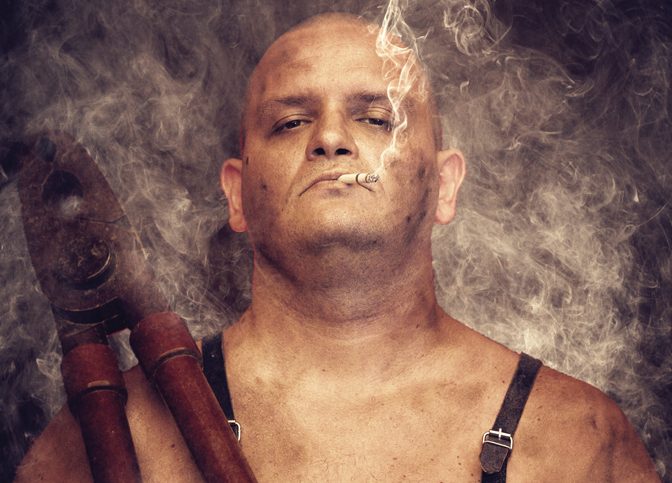“Be a man.” “Stand up for yourself.” “Don’t show weakness.” “Fight for what’s right.” “Violence is not the answer.” “Don’t be a girl.” “An educated man doesn’t behave like a barbarian.” “Only an idiot resorts to violence.” “Defend the weak.” “Be a man.” “God created men to enforce his will on earth.” “Look how pretty she is.” “A real man respects women.” “A real man can get a different woman every day.” “Go on… hit on her…” “You will go to hell if you look lustfully at a woman” “Be a man.” “Hit him; he insulted you.” “Real strength is patience.” “If you don’t fight you are a coward.” “Kindness is strength” “Kindness is weakness.” “Real men don’t cry.” “Real men are scared of nothing.” “Be a Man.”
Between the culturally inherited views on men and the associated acceptable behaviors, and the images hailing from the various forms of global media, we have a generation of boys and men that is bombarded from every direction by contradictory messages about what manhood entails. Look at the nearest comic, and you are likely to find a hulking monster of a man as the main character (or even the monstrous Hulk himself if you are lucky), thrashing bad guys left and right and standing victorious over a pile of their inert bodies at the end of the story.
Listen to the nearest political or religious speech targeting young men. Listen to what it tells them about their duty, about sacrifice, about hard work and about how they should stand up against what is wrong and for what is right.
Consider then what they (we) are taught at schools about how violence is never the answer, and that educated men behave in a civilized manner, avoiding unnecessary confrontation and not causing trouble. The message is drilled ad nauseam.
Then there is the reality that young men are exposed to in terms of power dynamics. When they step out of the protective bubbles of their homes, schools, comics, or entertainment, they find that often being good does not necessarily mean that they will win in the end. They sometimes realize that the loudest and most aggressive are the ones who get what they want. Respect and fear become intertwined, and the ethics and morals lauded inside the safety and comfort of the classrooms and texts, loses its luster.
That is where things get complicated, because we vilify confrontation in all its forms, and deny its innate presence in our structural make up. Rather than direct and guide its energy towards constructive goals, we attempt to suppress it in most public contexts, allowing it to fester unchecked outside the confines of ethical and moral boundaries.
Like all things relegated to taboo status, the relationship between manliness, confrontation, violence, kindness, morality, and ethics has become blurred. Because the relationship is not dealt with in the open, the vacuum has been filled with ideas that have developed through social dynamics particular to every community. This allows for fringe ideas to bleed in and help deform concepts, resulting in a hybrid that compartmentalizes the different aspects of manliness and allows each to grow without any regard to maintaining the balance between them, or even allowing them to act as checks and balances.
This fosters selectively black and white world views, as well as internal dissonance in the individual concerned. The same person can hold two conflicting ideas simultaneously, separating their behavior based on circumstance. The same person can be very spiritual for instance within a religious context, extremely abusive in his relationships, illogically aggressive in public, and attentive and careful at work. These selective views, these pitfalls and vacuums contribute to the spread of extremism and erratic behavior among young men seeking to prove to themselves (and society) that they can live up to the conflicting ideals they have been fed without letting go of their morality or ethics. In the absence of guidelines on managing this behavior, it can spiral out of control and result in both individual and collective violence.
Fortunately (for broader society at least) the effects of this confusing and internally distressing equation are often kept well under wraps, exhibited in extreme behavior at sporting events, video games, or other social occasions where it is socially acceptable to vent for a few moments by screaming at the top of your voice and jumping about.
So for the love of God, give one a hug, and possibly a donut.











